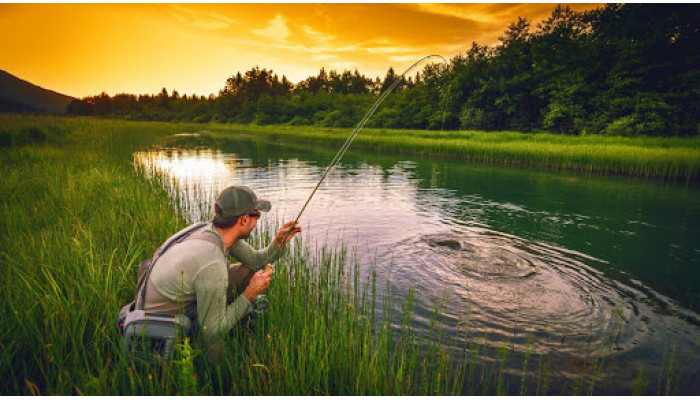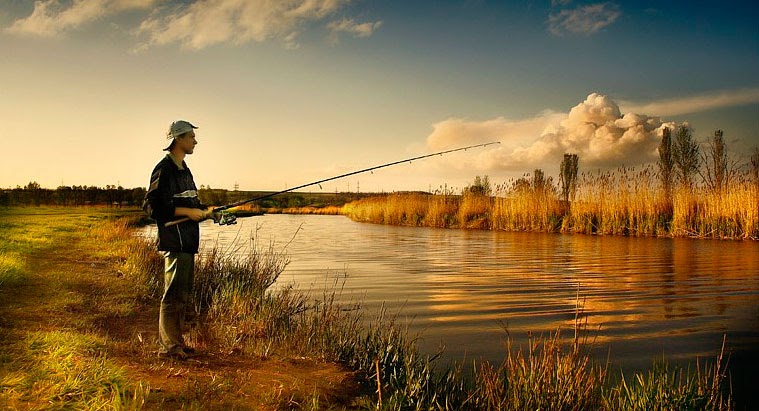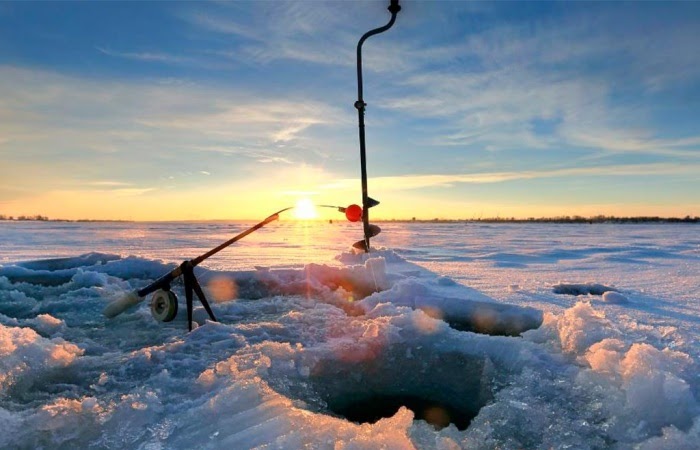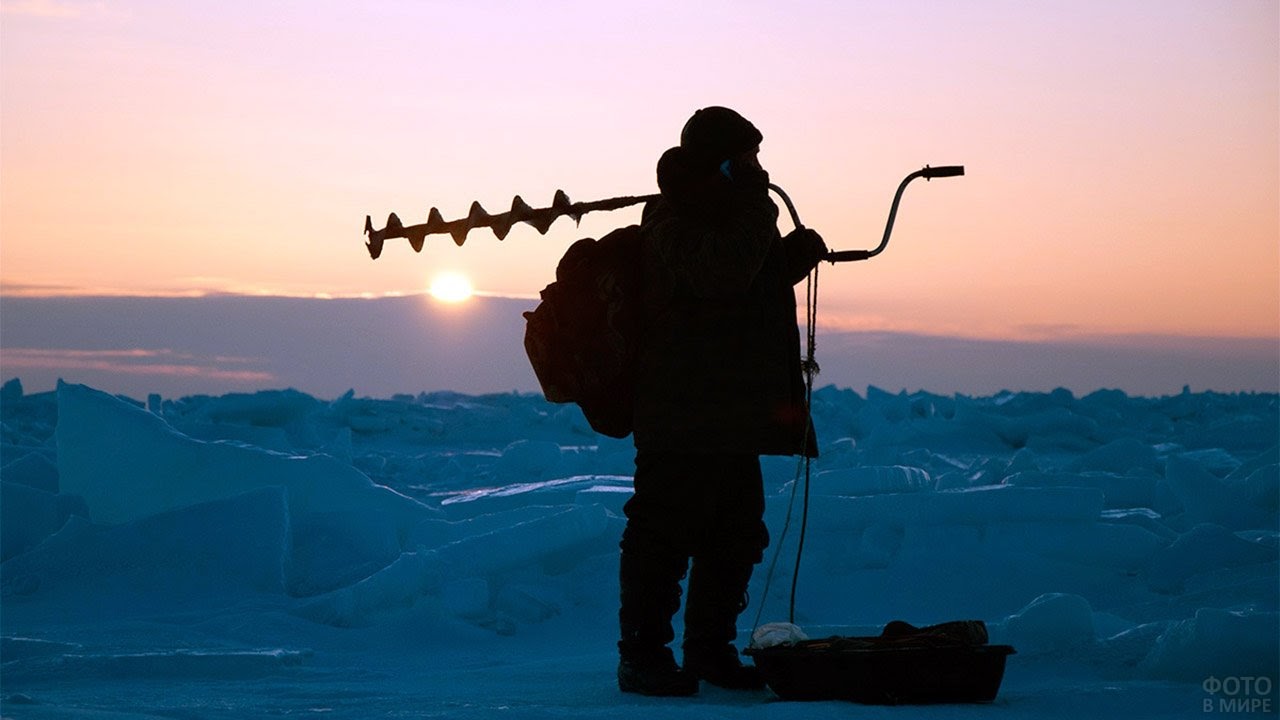Content:
Preparing for summer and winter fishing: what to take with you

To get the maximum pleasure from catching fish, every angler (both beginner and professional) must collect all the necessary equipment. You can figure out what you need to take for fishing , based on a certain season. The main difference lies in the winter and summer hunting. As for the off-season period, in this case, the tackle is repeated with summer and winter fishing.
What to take with you on your summer fishing trip?

The first trip in the summer to a fishing "hunt" is a small holiday for every angler. It is important for beginners to read a few articles on the topic " everything for a beginner fisherman " in order to not only enjoy the process, but also return home with a good catch.
The list of specific accessories depends on the following factors:
- fishing method;
- the place where the "hunt" will take place;
- how to get to the reservoir - on foot or a specific vehicle;
- fishing conditions.
In addition, always take into account your own wishes for a comfortable pastime on the pond (for example, you will need to take special means to protect against midges).
Tackle
Once you have decided on the right fishing method, you can choose the perfect rod for fishing. The number of rods depends on your experience: the less experience in fishing, the less tackle you need to experiment. It is better to take 1-2 rods, but proven ones, which should be transported half-loaded in a special protective case.
Most often, in open water, spinning rods are used - two- or three-piece, the length of which varies from 1.7 to 3.4 m.
Going to the pond, do not forget to take spare parts of the equipment: during the "hunt" hooks, floats or sinkers can be damaged or lost.
Bait and bait
To catch civilians of reservoirs in the summer, it is worth using bait mixtures of plant origin - crackers, cereals, grains, cereals and more. But it is not necessary to feed predators.
Fans of float fishing always take a huge range of baits with them to the pond:
- vegetable options - dough, corn grains, pearl barley, etc.
- animals - worms, larvae.
Spinning players go to the pond with a large supply of silicone lures, various wobblers and lures. It is important to have a huge selection of lures on hand to please the fastidious underwater dwellers.
Equipment
Fishing equipment in the summer is as follows:
- Several rod stands to help free your hands.
- Sadok . In the bucket, the fish quickly falls asleep in the summer, and in the cage remains mobile for a long time.
- Landing net , which is taken in the hope of catching a trophy specimen.
- Chair for comfortable bite waiting on the shore.
- A capacious bag for all kinds of small things.
- A boat and an echo sounder , which will help determine the depth at the site, as well as study the bottom topography.
Clothes and footwear
When preparing for the summer "hunt" on the pond, it is important to dress in such a way that you feel comfortable and as comfortable as possible. Choose cotton and other breathable loose materials for clothing.
The choice of footwear depends on the conditions in which the fish are to be “hunted”. It is recommended to take two pairs at once: the first is wading boots, and the second is sneakers and other light shoes. Socks must be necessarily cotton, which contains a minimum amount of synthetic fibers. Remember to protect your head from the sun and bring a cap or bandana.
Winter fishing methods

As statistics show, there are far fewer true winter fishing enthusiasts than those who prefer to “hunt” in open water. However, for beginners, fans of extreme winter fishing, it is important to be extremely careful: you can go to a frozen reservoir only when the minimum ice thickness is 7-10 cm.
Fishing methods depend on the selected tackle and are classified as follows: active and passive. Some anglers prepare several holes and patiently wait for a bite, while others travel throughout the reservoir without stopping at each hole for more than 30 minutes.
Winter fishing rod
Studying everything about fishing with a rod in winter, you should remember that a full-fledged tackle, ready for use, looks like this:
- Sturdy rod with whip and comfortable grip.
- The reel is most often a single piece with the handle of the tackle and is called "balalaika".
- The line should be monofilament, and the optimum thickness ranges from 0.12 to 0.14 mm.
- Equipment for stationary "hunting", consisting of a sinker and hooks of size No. 4-6.
- Tackle for active fishing with a nod that acts as a bite alarm.
Winter spinning
The classic ice fishing is a spinning rod for horizontal guidance, which is used in unfrozen areas of the reservoir. Such models are complemented with monofilament fishing lines, and all their elements must be made exclusively of frost-resistant materials.
For vertical posting from the hole, special winter fishing rods are used, which are considered something in between a full-fledged spinning rod and a short winter fishing rod. They are made of carbon material, have a comfortable grip and several pass rings.
Zherlitsy
The girders must be used for pike fishing. They are fixed above the holes and supplemented with live bait. As a rig, anglers use a fishing line with a hook, on which a live bait is attached, and a load. All this is lowered to the required depth, and the platform reliably closes the hole.
On a flexible flagpole, a small bite signaling device in the form of a flag is used, which is fixed to the coil, and during an active bite it shoots upwards.
If you choose unprepared girders, then it is best to equip them with monofilament lines 0.4-0.5 mm thick, lead material, hooks and sinkers. Doubles or tees are often used as hooks.
What to take with you on a fishing trip in winter?

For winter fishing, equipment and tackle for a beginner fisherman play a particularly important role. After all, with the wrong preparation, there is a risk of freezing and going home with nothing.
Therefore, it is important to be prepared for some financial investment. First of all, you should take care of your comfort and safety - you should not save on equipment. You should be not only warm, but also comfortable, so that outerwear does not constrain active movements.
Tackle
What gear is needed for fishing in winter, we have already specified. You will need to take with you several prepared fishing rods and do not forget about spare parts of the equipment:
- nods;
- fishing line;
- ready-made installations from home.
For storage and easy transportation, it is recommended to purchase special fishing boxes. It is best to choose boxes with multiple compartments, each with a lid. Thus, during transportation, all parts and elements will be in their places and will not mix with each other.
You can buy 2-in-1 boxes, which when folded serve as a chair with a warm seat.
Groundbait and bait
In winter, almost all underwater inhabitants switch to food exclusively of animal origin. As a result, the fish diet contains mormysh and crustaceans. That is why anglers choose all kinds of jigs as the main types of bait: devils, goats, witches, and so on.
Some anglers are not afraid to experiment and successfully combine jigs with various baits of animal origin (most often bloodworms). “Mouthless” are especially relevant in the process of active catching of underwater predators, and jigs, supplemented with attachments, have found their application in passive “hunting”.
Also, on the pond, you can take different versions of balancers and special spinners designed for vertical wiring. It is best to prepare several different baits in order to accurately "guess" the mood of the fish.
As for the bait mixture, an excellent solution is the use of bait with the addition of animal components in order to "stir up" passive predators a little: dry blood, fodder bloodworms, maggots, chopped worms and more. You need to feed the fish closer to the bottom, throwing prepared feeders.
Well tooling
Going to a frozen body of water in winter, every angler should take one of the main tools with him - an ice screw . Novice anglers can purchase budgetary ice augers of a simple design - these are hand tools from Chinese or domestic manufacturers. Professionals, on the other hand, are accustomed to working with comfortable and multifunctional ice drills designed for long-term operation. This category includes all sorts of models from Scandinavian brands.
It is recommended to pay attention to tools with spherical knives, which have an average hole diameter: they allow preparing holes of 110-130 mm in size. For those who do not want to manually prepare a place for a fishing "hunt", modern motor-drills or electric drills are offered.
If there is such an opportunity, you can take with you to the pond and an ice pick. The presence of this simple crowbar with a comfortable handle is extremely necessary when you need to check the strength of the ice crust, as well as quickly get rid of the resulting porridge on old holes. In order to be able to quickly clear the hole from snow or crumbling ice crumbs, you need to take a scoop with you.
Equipment
The list of necessary equipment for winter "hunting" is much longer in comparison with summer training. Anglers should spend enough time at this point to take the following with them:
- Bagorik, which performs the full function of a landing net in winter.
- An extractor or yawner, whose task is to help the angler to quickly get the stuck hook from the mouth of the fish without damaging his own fingers.
- Echo sounder - in winter, it becomes quite difficult to determine the depth at the site and the bottom topography, and therefore you cannot do without an echo sounder.
- The tent is necessary as protection from strong gusts of wind, which often walk on water bodies.
- Take the heater if you have a tent. More often than not, experienced anglers prefer to use gas cylinder heaters.
- A camping mat made of foamed polymer is considered an ideal thermal insulator. This is a great solution if you don't have a chair close at hand.
- The backpack is a versatile piece of equipment for summer and winter fishing. In it, the angler carries all the small accessories that should always remain at hand.
- Ropes and rescuers. Under the latter, it is customary to consider special pins with handles, interconnected by a strong cord, designed for the weight of an adult.
Clothes and footwear
Winter equipment must meet the following criteria - be multi-layered, warm, comfortable and loose.
You should dress in the following sequence:
- Thermal underwear , the task of which is to maintain a certain body temperature and remove moisture.
- Thermosocks , on top of which we put on socks made of natural wool.
- Fleece underwear that perfectly complements cotton thermal underwear.
- Jacket with a hood, a high collar and pants (as an option, you can use a jumpsuit with suspenders). It is recommended to purchase a quality kit made of membrane material and supplemented with artificial filler.
- The hat is a multi-layered warm hat with earflaps with fleece lining and high-quality filler.
- Gloves can be selected according to the type of ski. An alternative option is knitted mittens, over which synthetic mittens with filler are worn.
The image of a fisherman is completed with high-quality footwear - these are comfortable “foam” boots or special thermal footwear. In the first case, you will need to use thermal insoles that perfectly keep warm air inside the shoe.
